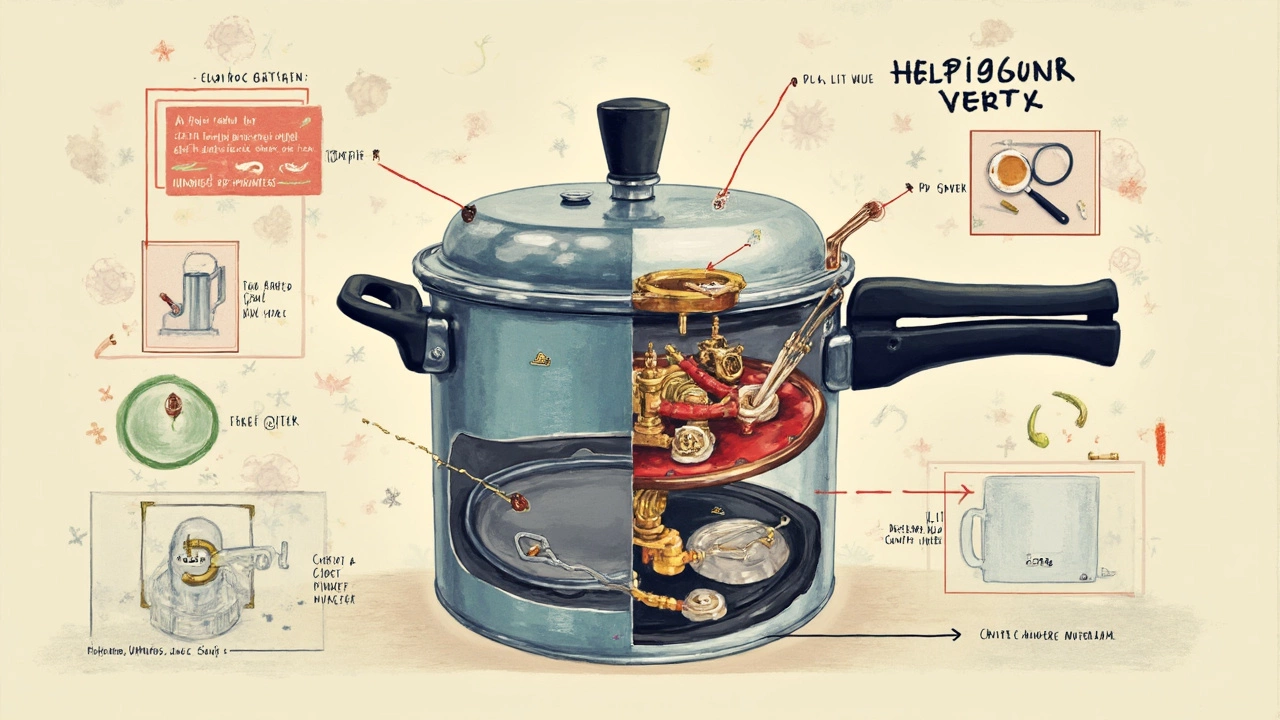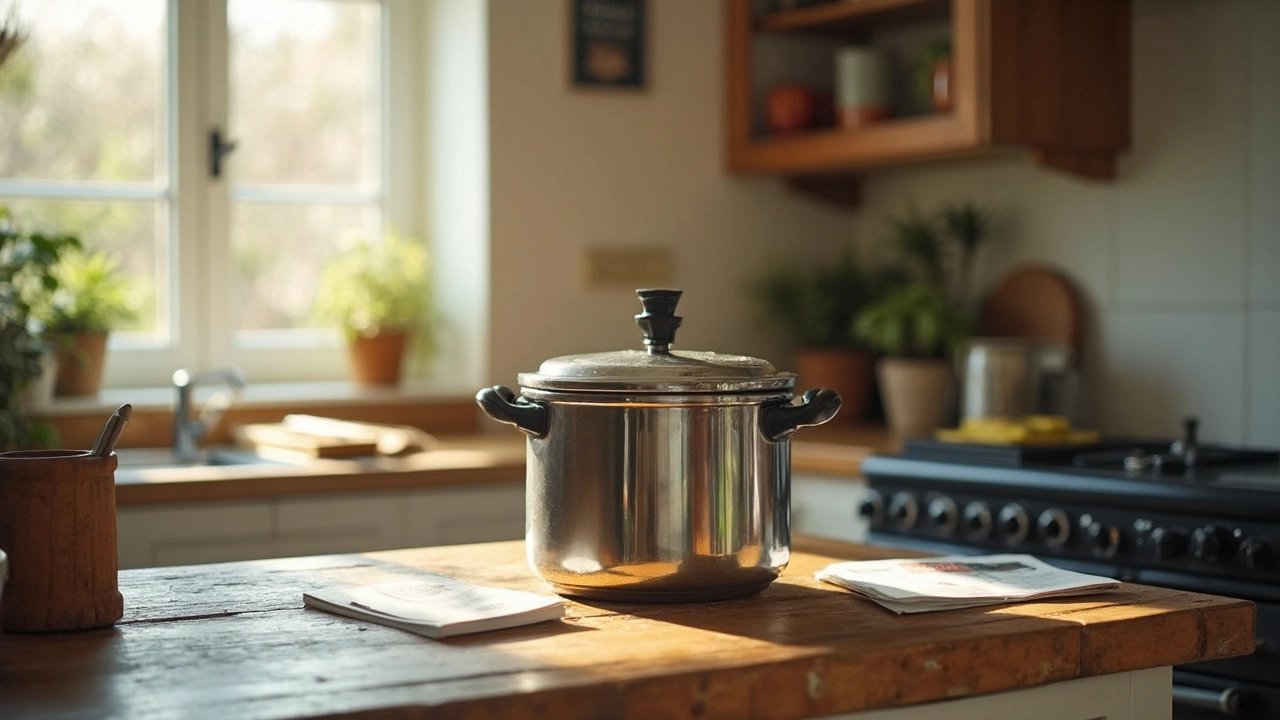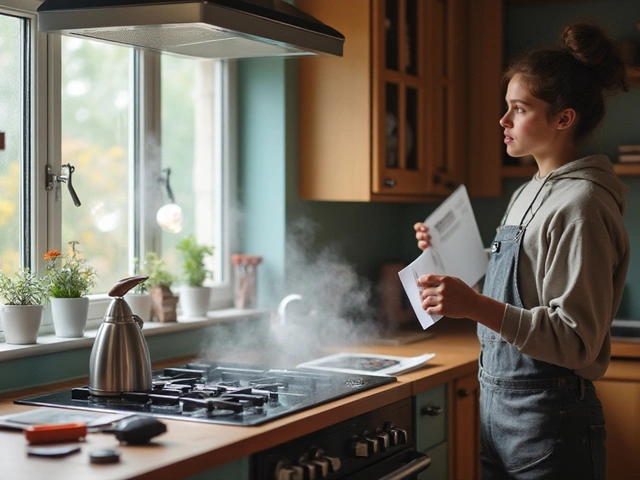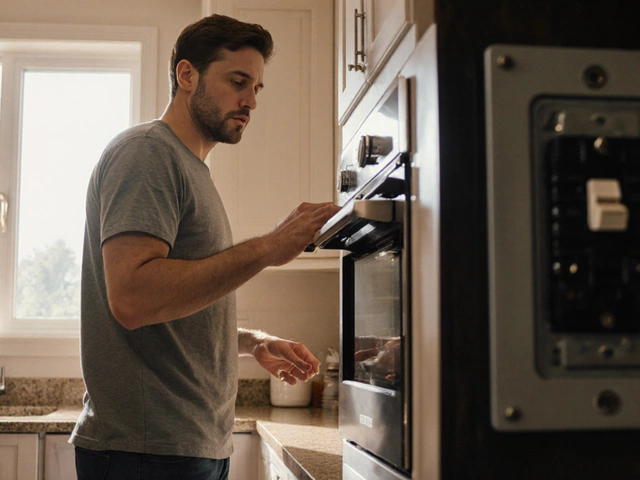Think your pressure cooker will last forever? Spoiler: it won’t. But if you know what really drags these things down, you can squeeze every bit of value from yours. Forget the old wives’ tales about pressure cookers lasting generations—most modern models have a definite shelf life.
Here’s the kicker: some parts of your pressure cooker will wear out way before the whole thing kicks the bucket. It’s usually the tiny rubber gasket, the valves, or even the handles that fail first, not the bulky metal body. Miss one minor maintenance step, and you might have to buy a whole new unit years earlier than you need to.
So, how do you actually keep your pressure cooker running smoothly? There are no magic tricks—just practical steps and smart habits. We’re diving into what shortens your cooker’s life and how to fix it before it’s too late, so you can avoid buying a replacement before you’ve had your money’s worth.
- What Makes a Pressure Cooker Wear Out?
- Average Lifespan by Type and Brand
- Warning Signs Your Cooker Is Failing
- Daily Habits That Make Cookers Last Longer
- Essential Maintenance and Repair Tips
- When It’s Time for a Replacement
What Makes a Pressure Cooker Wear Out?
Most people think their pressure cooker lifespan depends just on the metal, but that’s not true. It’s the smaller stuff—gaskets, seals, valves, and even safety locks—that call the shots. These parts deal with heat, pressure, and steam every time you cook. Over time, that takes a toll.
The biggest troublemaker? The rubber gasket. This ring keeps steam sealed in, but with regular use, it gets brittle, cracked, or misshapen. Once it stops fitting tight, your cooker can’t keep up the pressure or cook food evenly. Manufacturers often recommend swapping the gasket out every year or two, depending on how much you use your cooker.
Valves and safety features work hard too. If they clog up (hello, leftover rice grains or meat bits), they start to fail. Once a valve sticks or doesn’t close right, it puts extra strain on the whole cooker. That’s not just bad for your dinner—it’s a real safety risk.
Handles are another weak spot. Modern cookers use plastic, which gets loose or cracks with repeated heating and cooling. Handles that feel wobbly or show hairline cracks can actually break off, turning even a sturdy metal cooker into junk.
Let’s get specific with what can make a pressure cooker wear out:
- Neglected maintenance: Skipping regular cleaning leads to stuck valves and ruined gaskets.
- Harsh cleaners and scouring pads: These can scratch the interior, making it easier for food to stick and gunk to build up, hurting overall kitchen appliance durability.
- Exposing the body to rapid temperature changes: Pouring cold water on hot metal sounds harmless, but it can warp and weaken the pot.
- Leaving food residue: Leftover acid in food or salt can cause pitting, rust, or discoloration.
If you want your pressure cooker hanging around for years, keep an eye on these parts and habits. Most failures are avoidable with just a bit of care.
Average Lifespan by Type and Brand
If you’re wondering how long your pressure cooker lifespan really is, it depends a lot on what kind you’ve got and who made it. Not all cookers are built the same, and the numbers can surprise you.
Stovetop pressure cookers are the tanks of the kitchen. If you stick to brands like Presto or Fissler, you’ll rarely need a replacement for the first 15-20 years—sometimes even longer if you treat yours right. Their simple mechanical designs make it easy to swap out gaskets and valves when they give out.
Electric pressure cookers, though, are more of a mixed bag. Fancy models like the Instant Pot can give you five to ten years, tops, before the electronics show their age. It's the circuit boards, digital displays, and sensors that tend to fail much earlier than the steel pot itself. Once that happens, repair usually costs as much as a new one.
| Type | Typical Lifespan | Known Brands |
|---|---|---|
| Stovetop | 15-20+ years | Presto, Fissler, Hawkins |
| Electric | 5-10 years | Instant Pot, Ninja, Crock-Pot |
Another thing that can make a difference? How easy it is to get spare parts and support. Top brands almost always sell replacement gaskets and valves, so you don’t have to retire the cooker just because a $10 part wore out. Cheaper, no-name brands don't usually offer this luxury—so you end up tossing the whole thing sooner.
If your goal is a pressure cooker that’ll survive family dinners for the next couple decades, invest in a well-known brand. You’ll pay more up front, but you’re way less likely to see it in the trash after only a few years. And no matter what the box says, even the best model benefits from regular cooker repair and basic maintenance.
Warning Signs Your Cooker Is Failing
If you want your pressure cooker lifespan to stretch as far as possible, you need to catch the signs of trouble early. Ignoring the hints your cooker gives you can lead to weak seals, leaks, or even real safety issues. What should you be watching for? Let’s break it down.
The first and most obvious sign is a lid that won’t seal right. Steam escaping from the sides or a lid you can’t lock into place usually means the rubber gasket or ring has worn out or shifted. Another giveaway: your favorite meals are suddenly taking way longer than before, probably because the cooker isn’t reaching full pressure anymore.
- Hissing or constant steam release – This usually means a damaged gasket or a clogged vent. Neither are safe to ignore.
- Discolored or cracked gasket – Gaskets aren’t meant to last forever. If yours looks stiff, sticky, or cracked, swap it out as soon as possible.
- Unusual smells after cleaning – Old food or mold trapped in the gasket can create off smells. If the stink won’t go, it might be time to replace components.
- Loose or rattling handles – If the handles feel wobbly or look damaged, stop using the pot until they’re tightened or replaced. Safety first.
- Flickering or failing safety valves – Valves should move freely and not stick. If pressure builds up with no release, you’re risking bigger, scarier problems.
Ever notice food takes longer to cook or your meat isn’t as tender as it used to be? That’s a subtle clue the cooker isn’t holding pressure cooker lifespan standards anymore. According to a report by Consumer Reports in 2023, “Over 70% of pressure cooker failures start with a worn gasket or faulty valve—common, but usually cheap and easy to fix.”
"Replacing worn gaskets and checking valves yearly will extend a pressure cooker’s life by several years," says Marta Lopez, Senior Kitchen Appliance Engineer at HomeTech Institute.
Also, if your cooker shows pitting, rust, or deep scratches inside the pot, it’s time to stop using it. That can lead to corrosion, which cuts your pressure cooker lifespan short and could mean food safety hazards.
| Sign | Possible Cause | Quick Fix? |
|---|---|---|
| Steam leaks from lid | Worn gasket | Replace gasket |
| Handle is loose | Worn screw/handle | Tighten or replace |
| Strange noises from valve | Clogged or old valve | Clean or replace valve |
| Pot taking longer to build pressure | Old seal, valve issue | Inspect and replace parts as needed |
Bottom line: Don’t ignore the early warning signs your pressure cooker gives you. A little attention now can save you from bigger repair bills (or accidents) later on.

Daily Habits That Make Cookers Last Longer
If you want your pressure cooker to go the distance, it all comes down to what you do every day. It’s not rocket science—just a few smart moves that make a big difference.
First off, always clean your cooker after every use. Food bits stuck in the sealing ring or valves mess with the pressure and can ruin the rubber gasket. A quick scrub under warm, soapy water is usually all it takes. Pay special attention to the lid and the area where the ring sits. Don’t throw these parts in the dishwasher unless your manual says it’s safe; gaskets and plastic handles often break down a lot faster from those harsh detergents and high heat.
Don’t ignore how you store your cooker. Always dry all the parts completely. Leaving the lid and pot separated allows air to circulate and helps keep that rubber gasket from drying out or getting musty. If you snap the lid on tight every time, moisture can get trapped and start to smell funky and even grow mold—yikes.
- Check the gasket for cracks or hard spots once a month. Replace it ASAP if you see any.
- Wiggle the valves and make sure they move freely. A stuck valve leads to pressure problems or worse.
- Open the pressure cooker regularly, even if you haven’t used it in a while, just to let out any trapped moisture or odors.
- Cook with the right amount of liquid—minimally 1 cup for stovetop, or whatever your model manual suggests. Too little liquid can scorch the bottom and warp the pot.
Another tip? Stick to plastic, wood, or silicone utensils. Metal utensils might seem tougher, but they can scratch the pot, make cleaning harder, and even mess up nonstick coatings in electric models.
Want to know how much a little care pays off? Manufacturers like Fissler and Instant Pot say that with basic upkeep, even affordable pressure cookers can easily last 7-10 years—or longer if you swap out rubber parts on schedule. Skipping these steps, though, usually cuts that lifespan in half.
| Maintenance Habit | How It Helps |
|---|---|
| Clean gasket after every use | Prevents odor, keeps perfect seal |
| Store with lid off | Avoids trapped moisture and mold |
| Check valves monthly | Reduces risk of pressure failure |
Quick checks and good habits keep your pressure cooker working safely and smoothly. These simple moves beat expensive repairs or early replacement any day.
Essential Maintenance and Repair Tips
If you want to max out the life of your pressure cooker, regular maintenance isn't just nice—it's necessary. Letting crud build up in the valves or ignoring that weird squealing noise is a recipe for breakdowns down the road. You don’t have to be a repair whiz to keep things running right; most of it comes down to simple habits you stick with.
Start with the gasket—the small rubber ring that seals the lid. This thing takes the most daily abuse. A lot of manufacturers, including Instant Pot and Prestige, recommend swapping out the gasket every 12 to 18 months, sooner if you spot cracks or stretching. If it doesn’t fit snug anymore, that’s your first sign of trouble. Always dry the gasket completely before putting the lid away; mold loves moisture.
Check the pressure release valve after every use. Any stuck-on food or residue can mess with the safety system, which is not something you want. Just pop it off, give it a scrub, and double-check that it moves freely.
- Hand-wash all parts—dishwashers can warp handles and mess with metal finish.
- Examine screws, handles, and locks; tighten anything loose as soon as you notice it.
- Inspect the inside for pitting, scorch marks, or rust. If you see a lot of these, the metal could fail before you’re ready.
- Replace parts showing real wear. Don’t wait for something to fully break—most brands sell replacement gaskets, valves, and handles online.
Experts back this up. The Good Housekeeping Institute recommends,
"Replace crucial parts like gaskets or safety valves yearly for best performance—don’t chance it, especially with older models."
For electric pressure cookers, unplug after use, and wipe the control panel and heating plate with a dry cloth. Water and electronics are not friends. If buttons start sticking or displays act weird, it’s safer to have a pro take a look instead of taking things apart yourself.
| Maintenance Task | How Often |
|---|---|
| Gasket Inspection | Every month |
| Valve Cleaning | After every use |
| Replace Gasket | Every 12-18 months |
| Check for Loose Screws | Every 6 months |
A little routine now means years more use. The best part? Most repairs are simple and cheap, especially compared to the cost of buying a new cooker. Treat maintenance like part of your cooking routine and your cooker will stick around for the long haul.
When It’s Time for a Replacement
There’s a definite point when holding onto your old pressure cooker just isn’t worth the risk. The big clue is usually in the safety features. If the lid doesn’t lock right, or the pressure release valve sticks or leaks no matter how clean it is, you’re skating on thin ice. According to Consumer Reports, “A failed gasket or warped lid can stop a cooker from sealing, which isn’t just inconvenient—it can be dangerous.”
"If the cooker shows signs of deep pitting, cracks, or you see any metal fatigue, it’s time to stop using it." – Consumer Reports, October 2023
Look for these specific warning signs that repairing might not cut it anymore:
- Gasket constantly leaks even after replacement
- Lid won’t seal or lock properly
- Visible cracks or deep scratches inside the pot
- Safety valve fails and can’t be replaced
- Rust that keeps coming back even after cleaning
- Loss of pressure during cooking (even after replacing common parts)
Manufacturers actually recommend retiring most pressure cookers after ten years, even if they seem fine. Stainless steel bodies might outlive the rest of the parts, but aluminum pots can develop invisible weak spots after years of high-pressure use. Don’t ignore it—this is where accidents can happen.
Here’s a glance at when replacement is usually the best (and safest) move:
| Problem | Repairable? | Safe to Keep Using? |
|---|---|---|
| Worn or broken gasket | Yes | Yes, after repair |
| Cracked lid or pot | No | No |
| Broken locking mechanism | Rarely | No |
| Persistent leaks | Sometimes | Not recommended |
Getting attached to your trusty cooker is normal, but when it puts dinner (and your safety) on the line, it’s time to swap it out. Replacement isn’t just about better results in the kitchen—it’s about peace of mind. Spending on a new one is way cheaper than dealing with a kitchen accident from an out-of-date pressure cooker.







